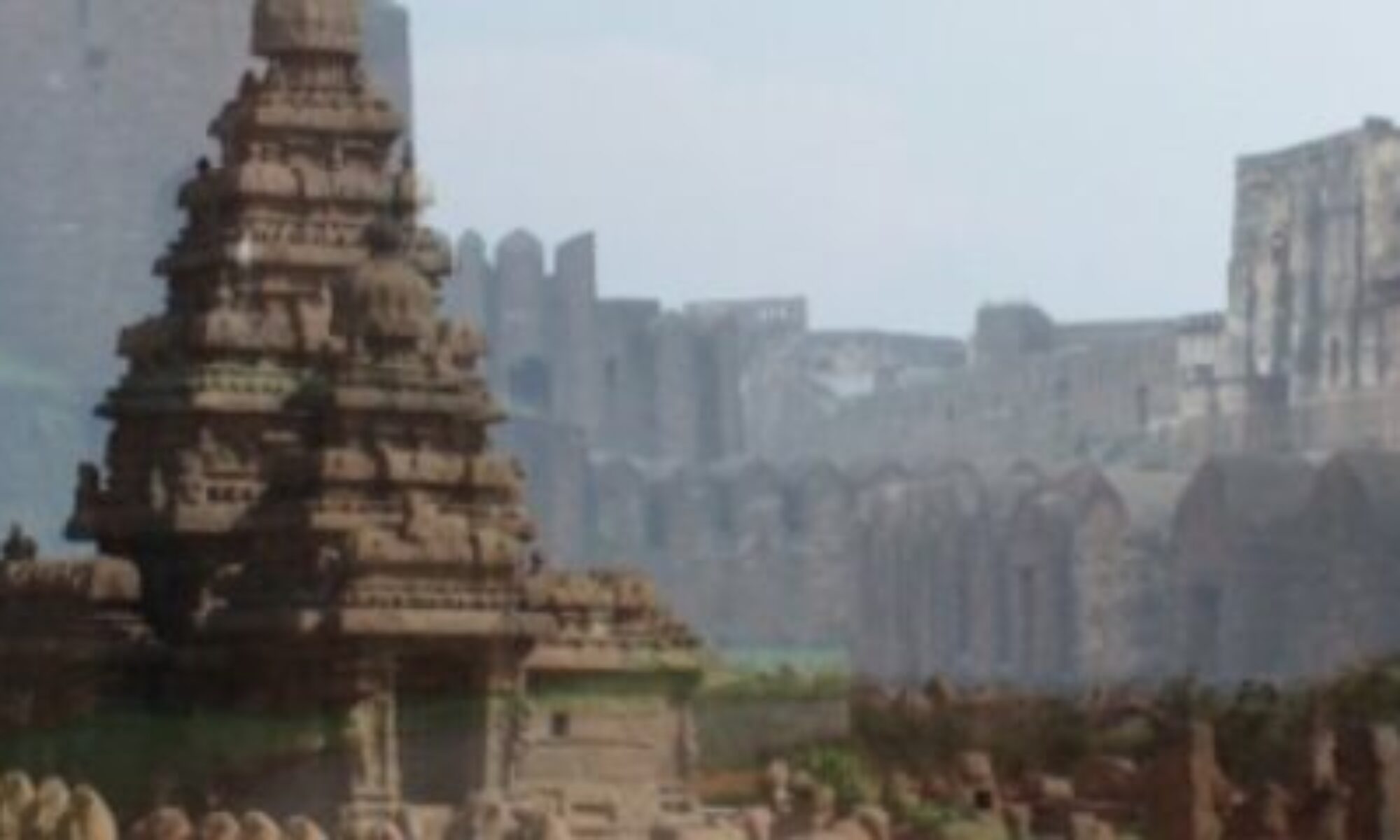Do T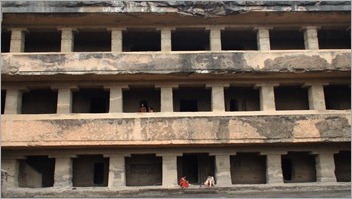 aal: This cave was for long regarding as consisting of two floors, so the name Do Taal. In 1876, the excavation of earth from what was then the lower floor revealed the landing of a stair from a cave below. This was partially excavated in 1877, and revealed a verandah 102 feet in length and 9 feet wide with two cells and a shrine in which is Buddha with Padmapani and Vajrapani as his attendants, the latter with the vajra in his right hand. Even after this the name Do Taal remained and is called so till date.
aal: This cave was for long regarding as consisting of two floors, so the name Do Taal. In 1876, the excavation of earth from what was then the lower floor revealed the landing of a stair from a cave below. This was partially excavated in 1877, and revealed a verandah 102 feet in length and 9 feet wide with two cells and a shrine in which is Buddha with Padmapani and Vajrapani as his attendants, the latter with the vajra in his right hand. Even after this the name Do Taal remained and is called so till date.
The stair leads to a similar verandah above, with eight 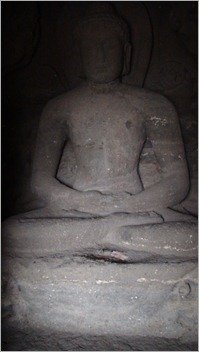 square pillars in front, the back wall pierced with five doors. The first, at the stair landing, is only the commencement of a cell. The second, to the front, leads into a shrine with a colossal Buddha, his right hand on his knee and the left in his lap. In front of the throne, rising from the floor, is a small female figure holding up a water jar, and to the right another sitting on a prostrate figure. Buddha, as usual is attended by Padmapani and Vajrapani. On the same wall, to the right are three standing male figures. The other cells too have figures of Buddha and his attendants. I would not take more space here to explain the same thing again.
square pillars in front, the back wall pierced with five doors. The first, at the stair landing, is only the commencement of a cell. The second, to the front, leads into a shrine with a colossal Buddha, his right hand on his knee and the left in his lap. In front of the throne, rising from the floor, is a small female figure holding up a water jar, and to the right another sitting on a prostrate figure. Buddha, as usual is attended by Padmapani and Vajrapani. On the same wall, to the right are three standing male figures. The other cells too have figures of Buddha and his attendants. I would not take more space here to explain the same thing again.
At the north end of the verandah the stair ascends to the upper storey. It was intended to have three shrines as the below one, however, one of them has not commenced. The other two cells has a Buddha image along with Padmapani and Vajrapani. On the walls are many Small Buddhas, a Padmapani with four arms, females with lotus buds etc.
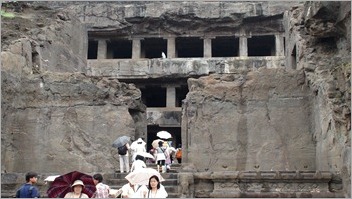 Teen Taal: Like the last, it is of three stories, the first entered by a few steps ascending from the court. It has eight square columns with bases, and plain brackets in the front, the upper portion of the central pair being covered with very pretty florid ornamentation. Behind this are two rows of 8 and one of six pillars whi
Teen Taal: Like the last, it is of three stories, the first entered by a few steps ascending from the court. It has eight square columns with bases, and plain brackets in the front, the upper portion of the central pair being covered with very pretty florid ornamentation. Behind this are two rows of 8 and one of six pillars whi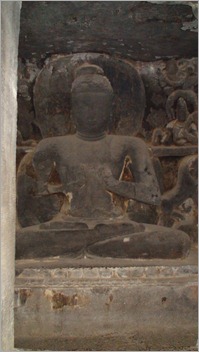 ch make them thirty in total.
ch make them thirty in total.
In a large compartment on the back wall, is a sculpture in nine squares; in the center Buddha with attendants, Padmapani and Vajrapani on either side; and, above and below, the six figures found in the shrines of Do Taal with book, sword, flag, and buds and flowers. This sculpture is repeated at many parts of this cave.
The upper floor of the Teen Taal is the most striking among the Buddhist caves in Ellora. It is divided into five aisles by rows of eight pillars, making them 42 in all, combing the two in front of the shrine. In recesses at the ends of the aisles are large figures of Buddha seated on thrones, with their usual attendants. At the front side of the back aisle, Buddha is on a lion throne with the wheel in the middle, and lying in front are two finely cut deer. Possibly this may be an allusion to Buddha’s teaching in the deer park in Banaras. In the back of the same aisle, Buddha is in the padmasana posture. Instead of his usual attendants on either side, there are two different images on either side of him. One is a squatting Buddha in the act of meditation. Secondly, Buddha soaring to the heavens and finally Buddha dying or entering nirvana. This is also called Mahaparinirvana.
To the right of this figure, on a raised basement are seven meditative Buddhas perfectly like save the foliage of a different Bodhi Tree top of each image. These are the seven earth-born Buddha’s Vipasya, Sikhi, Visvabhu, Krakutchanda, Kanaka Muni, Kasyapa and Sakya Sinha.
There are many other figures of Dhyani Buddhas and Bodhisattvas here in this floor. Surprisingly, there are some female forms which resemble Hindu mythological characters like Goddess Lakshmi and Saraswati.
We have come to the end of the Buddhist section of the Ellora Caves. Before we continue our journey with the Brahmanical or Hindu caves, we shall discuss a little on the Iconography of Hinduism.
